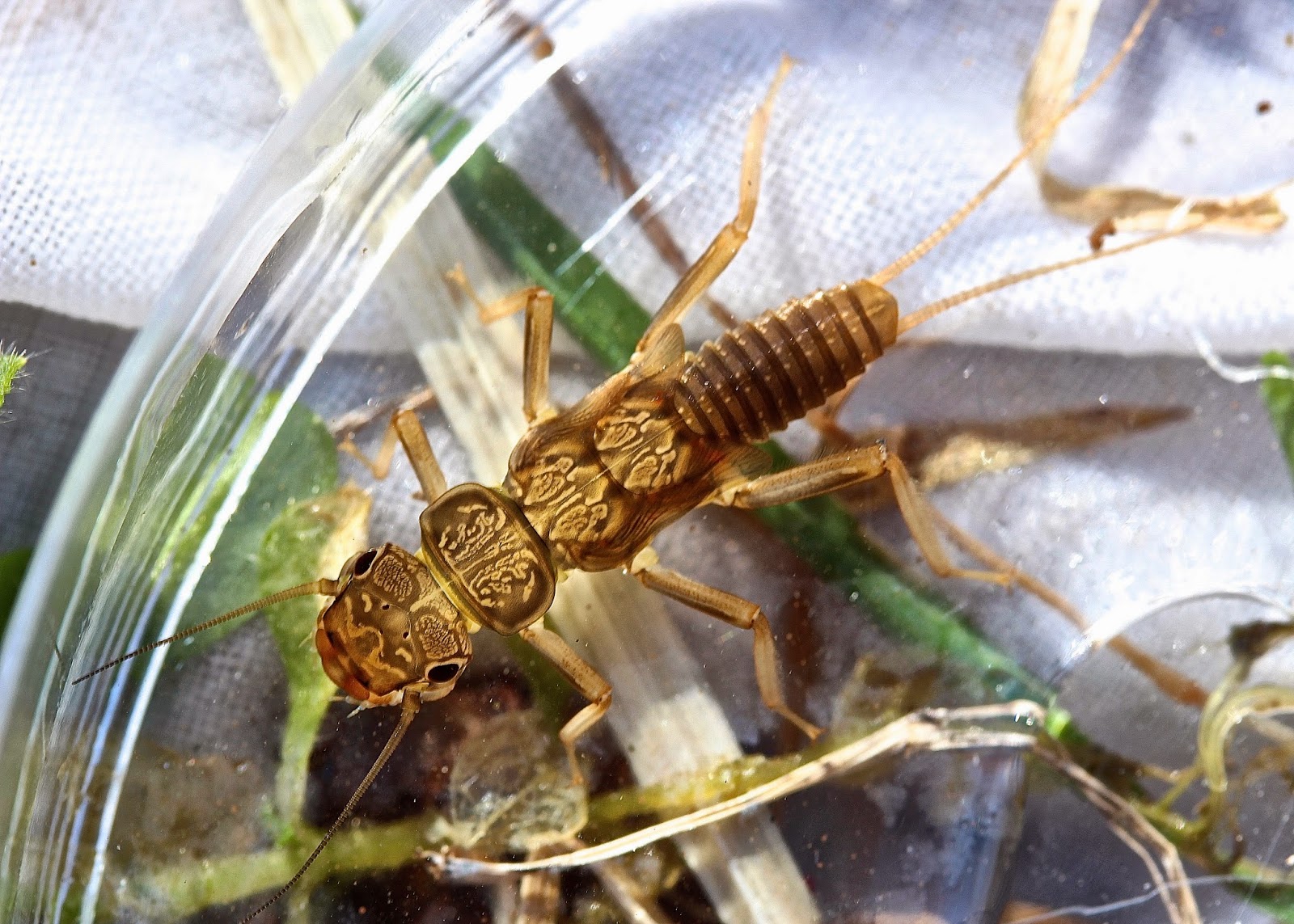At the moment, the leaf packs in South River are just loaded with these little beauties, as they were in the Rapidan River last month (see the entry from 2/24/13).
This is, by far the most common Perlodid we see in our streams in the spring, though the right name to use for these nymphs remains a bit of a problem. In Beaty's "The Plecoptera of North Carolina" posted on line in October, 2011, he referred to this species as I. nr. namata. He went on to explain that "Isoperla namata is supposedly geographically restricted to the Ozarks and the midwest and, therefore, BAU (NC's "Biological Assessment Unit") records for I. namata may represent an undescribed species." In April last year (personal communication, 4/29/13), he told me that these are either Isoperla montana or a similar species that has not yet been given a name (hence Isoperla n. sp. = new species). He went on to say, "Recently, systematic work on Isoperla by Kondratieff and Szcytko has shed light on the true distribution of namata and the presence of 2 (at least) cryptic species that have the same or very similar nymphal patterns as namata. Isoperla montana is one of those as is a new species currently being described by Kondratieff and Szcytko. I. montana is now known to be in NC and up through ME." He adds "n. sp. is also widespread in the east including NC and VA."
To sum up -- the Isoperla at the top of the page is either 1) Isoperla montana, or 2) a closely related species which we can call either Isoperla nr. namata or Isoperla n.sp. (Guess we could also call it Isoperla nr. montana.) (nr. = near) It might soon have a real species name.
I took photos of the biggest nymph I could find. This one measured 11 mm which is as big as they get for this species. They're fairly mature, though I've not yet seen one on which the wing pads have turned (black).
________________
The other stonefly I saw in big numbers today was the Chloroperlid (Green stonefly), genus Sweltsa, and they too are getting fairly mature. This nymph was 7 mm, and note how dark the pronotum's become.
_________________
Mayflies
1. This was a shocker! The spiny crawler, Ephemerella subvaria, a species that before today I've only seen in the Rapidan River. Pretty mature -- they'll probably hatch later in April.
2. And another spring spiny crawler, Ephemerella invaria.
3. Small minnow mayfly, Baetis tricaudatus. They too will be hatching soon: some already have.
and a side-by-side...
3. Flatheaded mayfly, Epeorus fragilis (part of the Epeorus pleuralis group). I'd sure like to know why this is the only stream where I see this variant of Epeorus pleuralis. (Well, they're in Entry Run as well.)
________________
Caddisflies
1. Only one: the free-living caddisfly larva, Rhyacophila fuscula. This is the one we most commonly see in our streams.
________________
The water was high after nearly 2 inches of rain over the weekend, and the wading was a little bit dicey.



















































.jpg)
.jpg)
.jpg)









